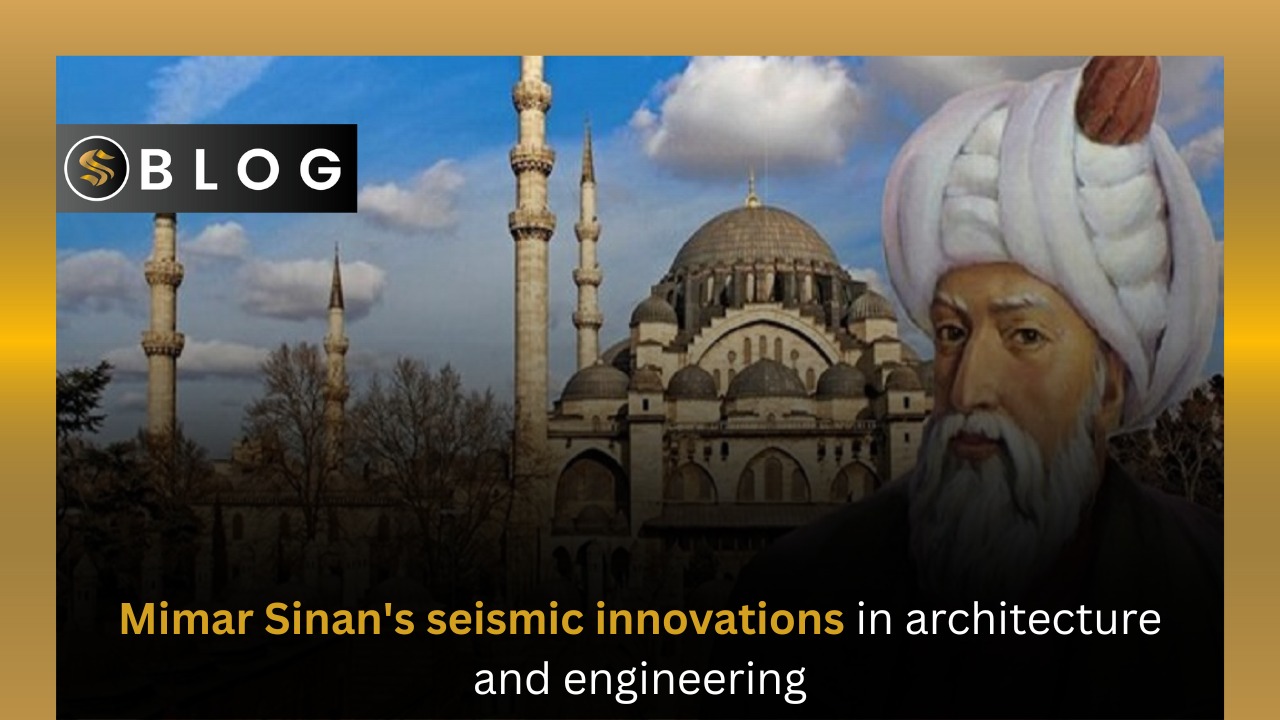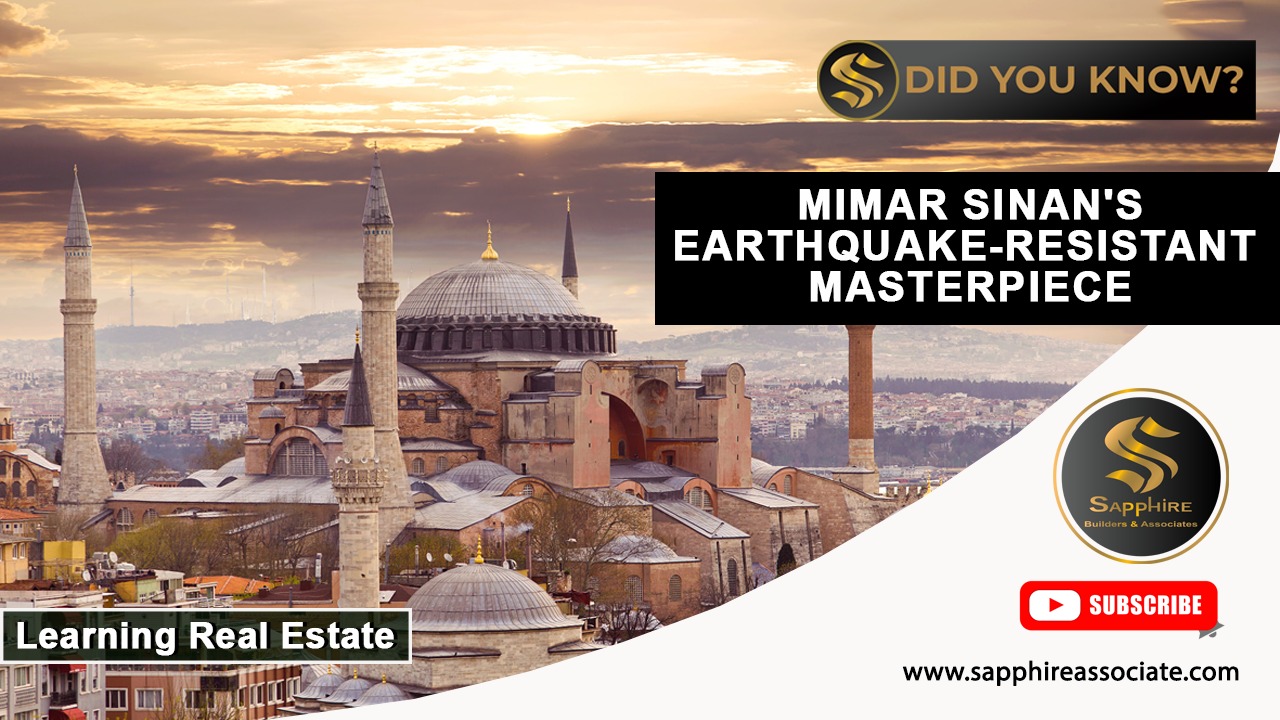
Share This Story, Choose Your Platform!
Engineering Brilliance: Mimar Sinan’s Innovations in Earthquake-Resistant Structures
Mimar Sinan, also known as Koca Mi’mâr Sinân Âğâ, was a prominent Turkish architect and engineer who lived during the 16th century. He served as the chief architect of the Ottoman Empire under three sultans and is widely regarded as one of the greatest architects in Turkish history. During his career, he designed and built numerous buildings and structures, including mosques, palaces, and bridges.
Mimar Sinan’s Earthquake Resistant Structures
Mimar Sinan lived during a time when earthquakes were a common occurrence in the region. As a result, he dedicated himself to designing buildings and structures that could withstand these natural disasters. His earthquake-resistant structures were not only functional, but also beautiful and enduring, and many of them still stand today.
Significance of Earthquakes in Mimar Sinan’s Time
During Mimar Sinan’s lifetime, the region was prone to earthquakes, which often caused widespread destruction and loss of life. In response, Mimar Sinan began to incorporate earthquake-resistant design principles into his buildings, using innovative techniques to ensure their stability and durability.
Features of Mimar Sinan’s Structures
Mimar Sinan’s earthquake-resistant structures featured a number of innovative design elements, including the use of arches, domes, and buttresses to distribute weight and support the structure. He also used materials like brick and stone, which were more resistant to seismic activity than other building materials.
Examples
There are many examples of Mimar Sinan’s earthquake-resistant structures still standing today, including the Selimiye Mosque in Edirne, the Rüstem Pasha Mosque in Istanbul, and the Sokollu Mehmet Pasha Bridge in Bosnia. These buildings and structures serve as a testament to Mimar Sinan’s skill and ingenuity as an architect and engineer.
Legacy of These Structures
Mimar Sinan’s earthquake-resistant structures have had a lasting impact on architecture and engineering in Turkey and beyond. His innovative design principles have been studied and emulated by architects and engineers for centuries, and his legacy continues to inspire new generations of designers and builders today.
1. Use of Ostrich Egg White and Onions
Mimar Sinan was known for his innovative approach to architecture and engineering, and this extended to the materials he used in his structures. One unusual mixture that he employed was a combination of ostrich egg whites and onions. This mixture was used as a binding agent in the mortar that held the stones together in some of his buildings.
The use of ostrich egg whites was particularly unusual, as it was not a common material in building construction. However, it was known to have strong adhesive properties and could withstand high temperatures, making it a valuable addition to the mortar mixture. The onions, on the other hand, helped to prevent the mixture from cracking and provided additional strength to the mortar.
While the use of ostrich egg whites and onions in building construction may seem strange today, it was a testament to Mimar Sinan’s innovative and resourceful approach to architecture and engineering. His willingness to experiment with unconventional materials and techniques helped to ensure the stability and longevity of his structures, many of which still stand today.
2. Use of Absorbing Materials
Seismic isolators are typically used in earthquake-resistant design to reduce the impact of seismic activity on a building. These isolators can be made of a variety of materials, such as rubber or steel, and are placed between the building’s foundation and superstructure to absorb seismic energy. However, Mimar Sinan recognized that this approach had limitations and instead developed a technique that used absorbing materials to dampen seismic activity.
To achieve this, Mimar Sinan used materials such as timber, which has a high degree of flexibility and can absorb seismic energy without transferring it to the structure. He also used lead, which is a dense material that can absorb seismic energy and prevent it from being transmitted to the building. By combining these materials with his other earthquake-resistant design principles, Mimar Sinan was able to create structures that could withstand seismic activity in a way that was unprecedented for his time.
Mimar Sinan’s use of absorbing materials was a revolutionary technique that has since been adapted and refined by modern architects and engineers. Today, a variety of materials and techniques are used to absorb seismic activity and create earthquake-resistant structures, but Mimar Sinan’s innovative approach remains a testament to his skill and ingenuity as an architect and engineer.
3. A Waiting Game
Mimar Sinan’s approach to architecture and engineering was characterized by a meticulous attention to detail and a dedication to ensuring the stability and longevity of his structures. One of the ways he achieved this was by waiting for a year or two after completing each step in the construction process to ensure that the ground could bear the load of the structure.
This approach was particularly important in the seismic-prone region where Mimar Sinan lived and worked. By waiting and observing the ground for a period of time, he could determine whether the foundation of the structure was stable and could withstand the weight of the superstructure. If he found any issues during this waiting period, he could take corrective measures to ensure that the structure was stable and safe.
This approach required patience and a willingness to delay the construction process in the interest of safety and longevity. It also required a deep understanding of the soil and geology of the region, as well as an ability to accurately assess the stability of the ground.
Mimar Sinan’s approach to waiting and observing the ground after each step in the construction process was a testament to his commitment to creating stable, long-lasting structures that could withstand the forces of nature. His dedication to safety and quality helped to ensure that his structures stood the test of time and continue to be admired and studied today.




